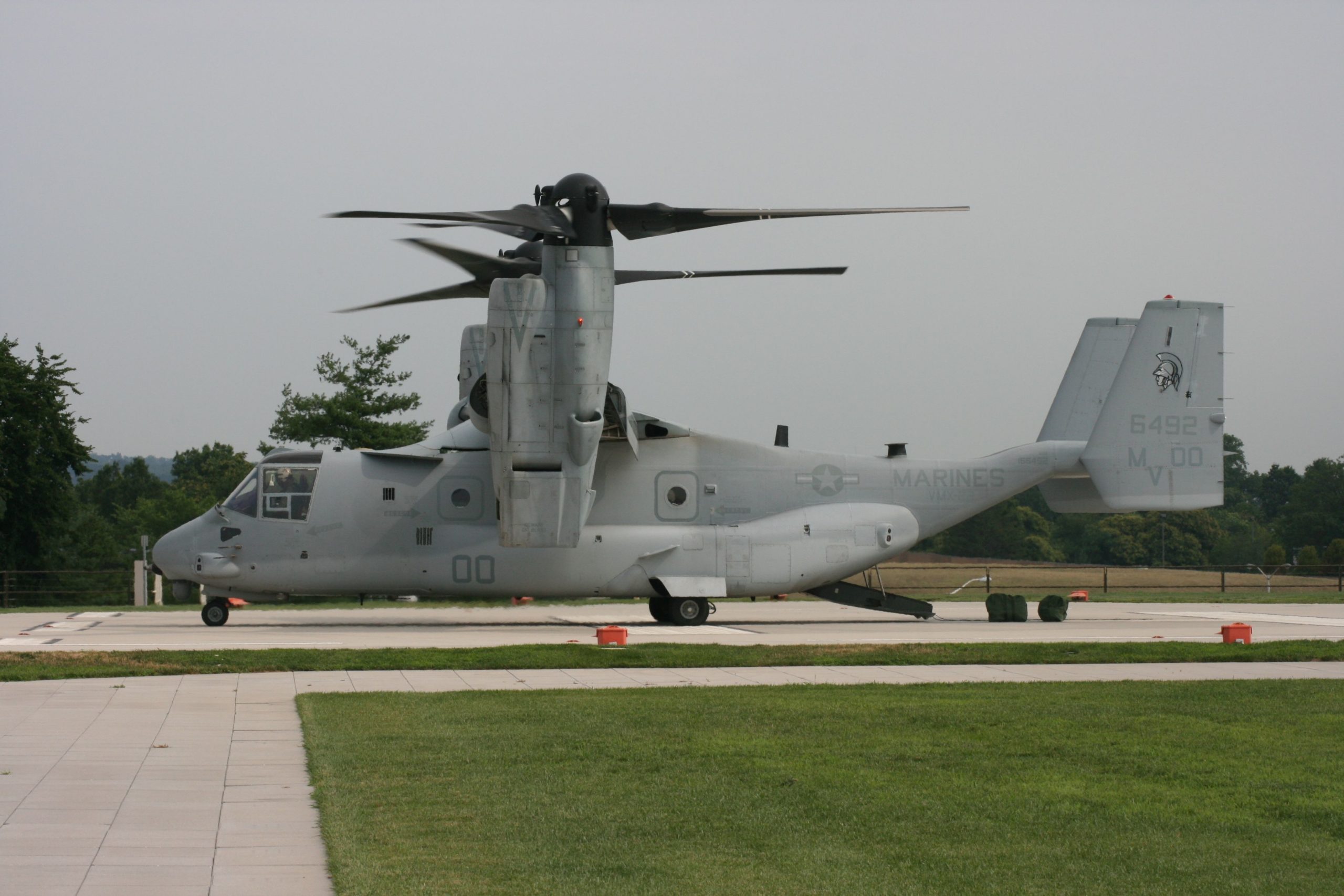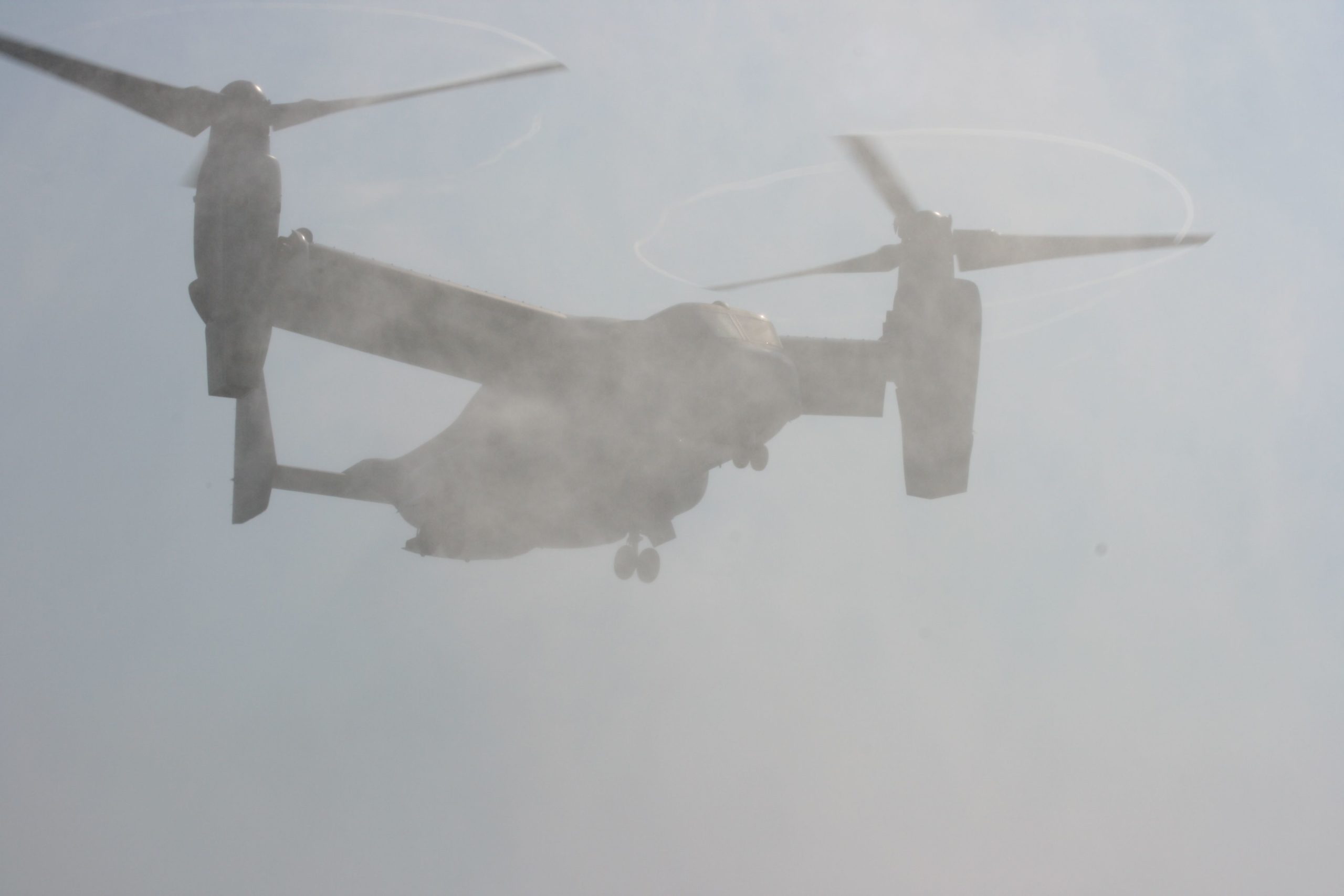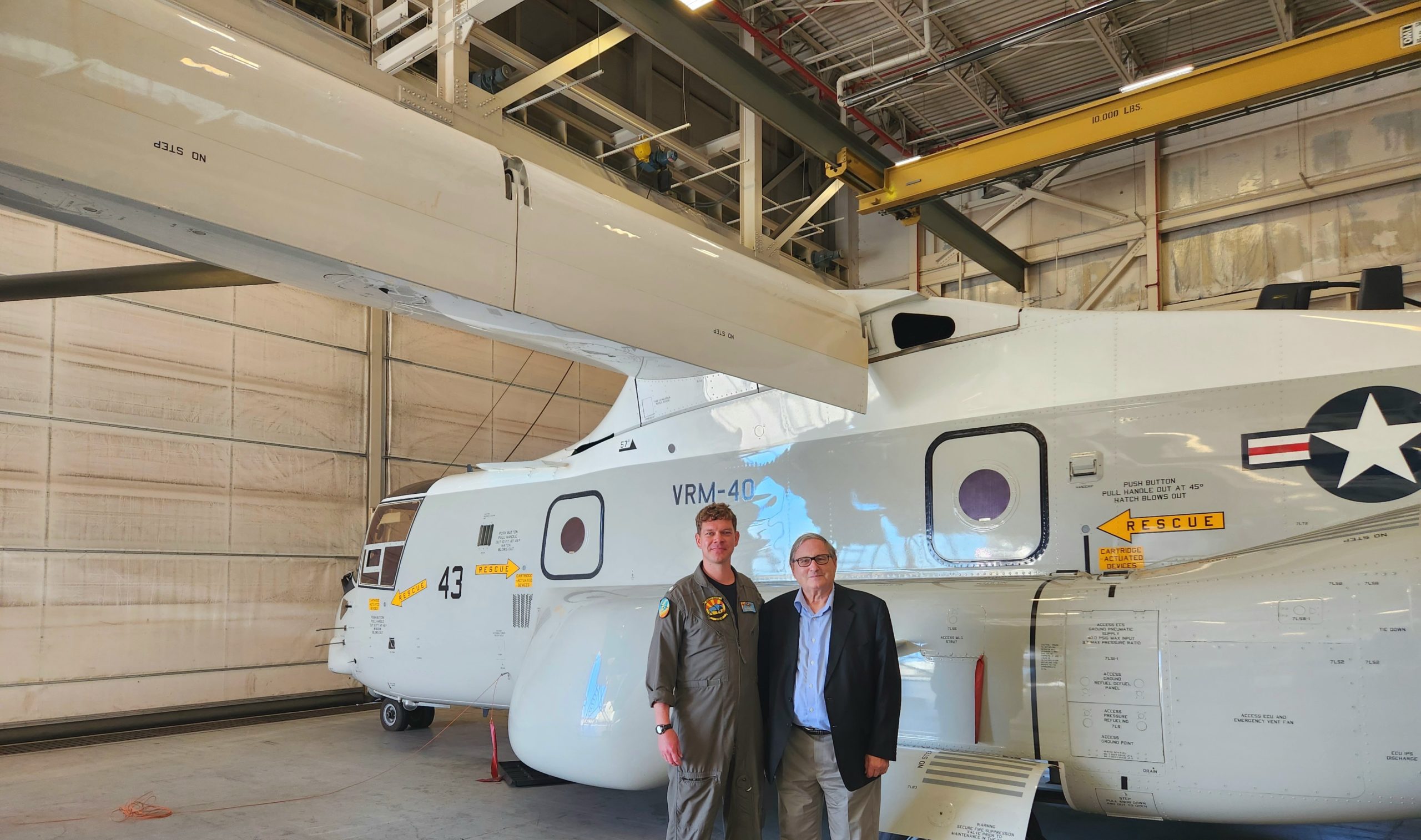17 Years Between Osprey Encounters at Naval Station Norfolk
I visited Fleet Logistics Multi-Mission Squadron (VRM) 40 the “Mighty Bison” on 29 October 2024.
As I walked to the squadron’s temporary facility and looked at the location of where their new hangar is being built, I thought back to the last time I encountered an Osprey at Naval Station Norfolk.
And that is when I landed there on a USMC Osprey when returning from HMS Illustrious at sea off the Virginia coast.
That was 17 years ago, and much has transpired in the tiltrotor enterprise since that time, which I discuss in detail in my forthcoming book on the subject to be published next year.
17 years ago, we took off from the Pentagon to fly to the HMS Illustrious but when we were to return the weather was threatening and we landed just after a Hawkeye did at the airfield at Naval Station Norfolk.
This was I wrote earlier about that experience in Military Logistics International story published in September-October 2007:
In July of this year, the USMC assigned two Ospreys and fourteen AV-8B Harriers to operate aboard HMS Illustrious. The British aircraft carrier was participating in a joint exercise with the U.S. and other allied navies near the Virginia and North Carolina coasts. The exercise was an unprecedented effort by the Marines and the Royal Navy, in which close coordination allowed the Marines to operate fully off the British ship….
For the USMC, the exercise provided an opportunity both to certify pilots and, more importantly, to develop coalition operational skill sets. The USMC is a flexible fighting force and sees its range of missions as requiring the ability to work with allies at sea and on land. The preparation for the exercise and the experiences of the exercise itself allowed the Marines to work closely with the Royal Navy.
And to thereby further develop coalition collaborative combat skills. It was not a technical exercise in interoperability: rather the Marines saw the exercise as an opportunity to develop an on-the-fly-division of labor skill sets so necessary for coalition operations. British procedures were mixed with Marine Corps procedures in crafting a blended coalition combat capability
Of course, the Brits and the U.S. Navy and Marines have gone on since that time to integrate the new UK carriers with U.S. fleet operations. And the Osprey has been a lynchpin to getting that process further advanced.
In the photo below, the Osprey we took to the ship and which we took from the Pentagon helo pad can be seen.

And in the next photo, the second Osprey which flew with us can be seen landing on HMS Illustrious.

But now Naval Station Norfolk has its own Osprey squadron, but one not yet envisaged 17 years ago, namely a logistics enabler for the fleet. This Osprey has been redesigned to add significant additional fuel capability for its fleet support mission, centered around support for the aircraft carrier.
This is how its arrival was highlighted in a press release by the Commander, Naval Air Force Atlantic Public Affairs published on 3 May 2024:
Fleet Logistics Multi-Mission Squadron (VRM) 40 the “Mighty Bison” held a change of command ceremony aboard Naval Station Norfolk, May 2. Cmdr. Matthew Boyce, who is from Spokane, Washington was relieved by Cmdr. Mason Fox, who is from Lemoore, California served as the executive officer before assuming the position as commanding officer during the ceremony.
The first East Coast-assigned Navy tiltrotor vertical/short takeoff and landing (V/STOL) CMV-22B Osprey aircraft, assigned to VRM-40, arrived in Norfolk on April 5. The remaining VRM-40 aircraft will begin to arrive to Hampton Roads in the weeks to come…
The CMV-22B will provide the fleet’s medium-lift and long-range aerial logistics capability, eventually replacing the C-2A Greyhounds of Fleet Logistics Support Squadron (VRC) 40 over the next several years. The squadron’s relocation to Naval Station Norfolk is part of their permanent duty station change from Naval Air Station (NAS) North Island in preparation to provide fleet logistic aviation assets to the Atlantic Fleet beginning in 2025….
Naval Air Force Atlantic is responsible for seven nuclear-powered aircraft carriers, 55 aircraft squadrons, 1,200 aircraft and 52,000 officers, enlisted and civilian personnel with priorities focused on warfighting, people, and readiness by providing combat ready, sustainable naval air forces with the right personnel, properly trained and equipped, with a focus on readiness, operational excellence, interoperability, safety, and efficient resourcing.
I had a chance to meet with Cmdr. Fox and members of the squadron as well as Rear Admiral Verissimo, Commander Naval Air Force, Atlantic during visit and will provide insights from them in future articles.
But for now, here was my chance to see the Naval variant of the Osprey during the visit with Cmdr. Fox as my guide.


